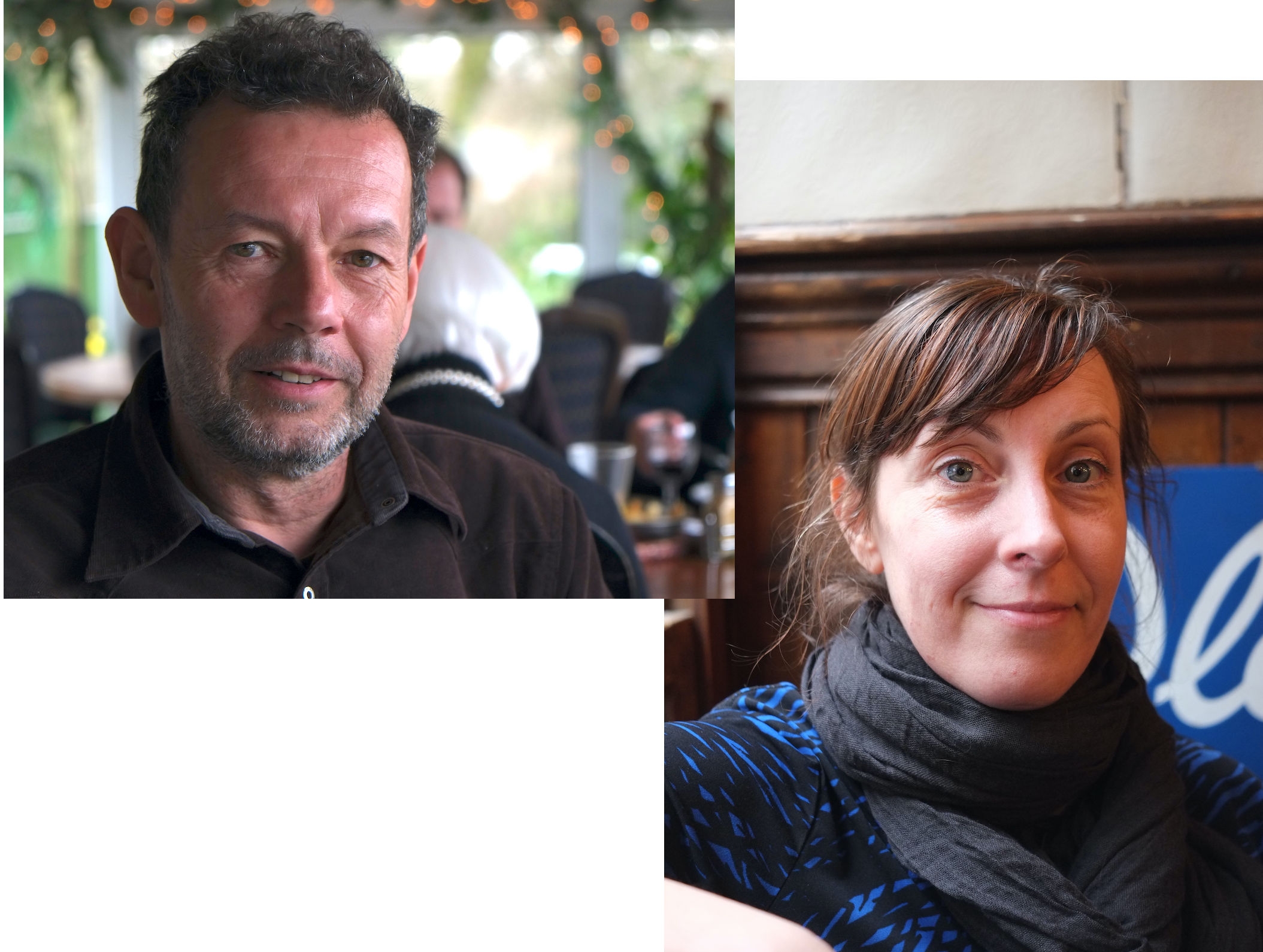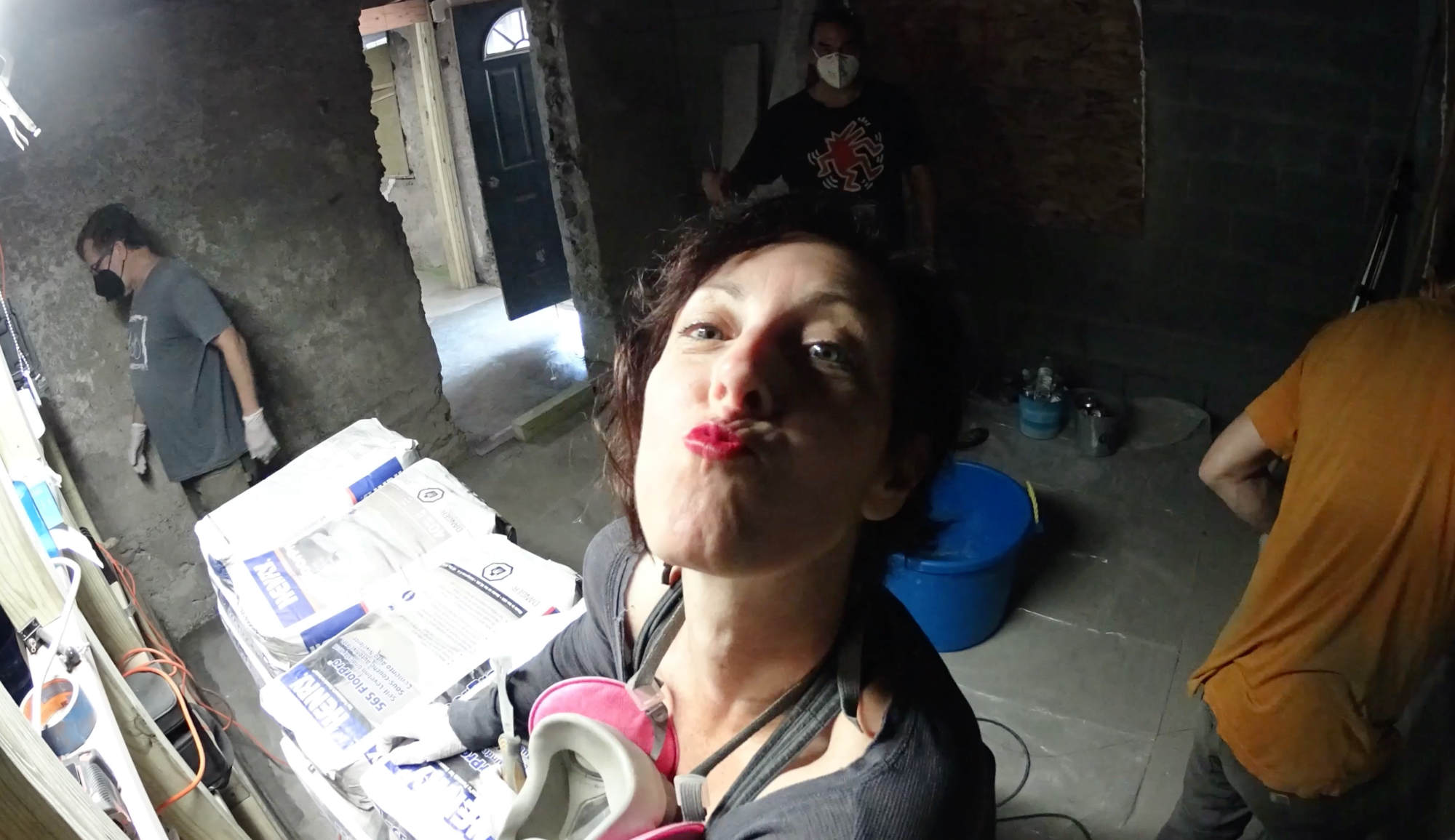How it Started
Welcome to Disaster Mansion. To be clear from the start it’s not really a mansion, however, it is a disaster. “Old three-story house that was once pretty grand” doesn’t run off the tongue or is quite as memorable as Disaster Mansion, so we are sticking with the latter.
We the owners/custodians are Aimee Gardner and David Linnard and we’ve taken on (possibly unwisely) the huge task of restoring this grand old lady. Neither of us has any building experience, but I think we are both pretty handy, have some very knowlegable friends and we still have a few brain cells between us.
We were both living in Oakland, CA, myself in software and Aimee at the Computer History Museum. To cut a long story short, the bay area became too expensive and Aimee got offered a job in Kingston NY for a non-profit, the O+ festival, which involves the exchange of arts and music for wellness services, such as massage, dental, general practitioners, holistic medicine etc. Aimee had lived in Kingston many years ago and had also volunteered for the festival in San Francisco and Petaluma so there were some existing connections to Kingston and O+. Luckily for me my company made every worker remote so I could relocate to the east coast.
Disaster Mansion (DM) can be found at 54 Gill Street, Ponckhockie, Kingston, NY. Ponckhockie may be a Native American name, possibly meaning “place of canoes” or “sacred burial ground”, but no one seems to know for sure. A local told us that if you stand in the right spot, you can see the profile of a Ponckhockie Chief in the cliffs overlooking Ponckhockie. That sounded like a load of old Ponckhockie but we checked last winter when the leaves had fallen and indeed you can see a very human like profile. I’ll take a picture soon (see our Ponckhockie Chief post).
Taken from the Catskill Archive:
In 1614, the Dutch established a trading-post where Rondout now is. The first fort there is said to have been in the western part of Rondout, on a level piece of ground, still called by its Indian name, Ponckhockie. This trading-post was established six years before the Plymouth colony in Massachusetts was founded, and it is thought that a few Dutch families settled there not long after. This settlement was soon broken up by the Indians, and a new one was commenced between the years 1630 and 1640.
Interesting enough Disaster Mansion was built by David Gill, who built a lot of the houses in Ponckhockie and neighboring Rondout. I think it’s safe to say that the street was named after David Gill.
I recently found this snippet from an article in the Hudson Valley Times.
Gill Street got its moniker from David Gill Sr., who was born in Ireland and arrived in Rondout from Quebec in 1848. He was in the lumber business and a skilled carpenter who built houses up and down Prospect Street. Prospect was renamed Gill in 1874, a year that saw many streets take on new identities – when the municipalities of Kingston and Rondout merged, streets got renamed to avoid duplication.
David Gill House, is the name given to the house in the book by William B. Rhoads, Kingston New York. The Architectural Guide. Built in 1869 by David Gill for his family, it’s described by William B. Rhoads as
a virtuoso performance with … Italianate paired brackets supporting the projecting eaves, as well as the turned balusters and pendants of the second-story porch.
Seeing as the house was built by Gill and is on Gill street, we will eventually name it “Gill House” and have it carved into some nice Kingston bluestone.
The house has been through a lot, rumored to have been a brothel, a home for children with disabilities and of late it was turned into apartments.
So how did we end up with the place? I wanted an interesting architectural/historic project and Aimee wanted a house with character. This was a good compromise.
Aimee saw Disaster Mansion listed in a tax auction by the City of Kingston. It had been abandoned for almost a decade and had been gutted or pilfered from over the years. The house was secured shut so you could only view it from the outside with no chance of survey etc., the best you could do was peer through a window. Even though it was a mess Aimee felt a connection to the place and as I was looking for an interesting project, it was a house we could both agree on. This was probably more than we were both looking for, but we won the auction and the slow restoration has started.
I did a walk through a while back that will give you a good sense of the project
and here also are some early posts so you can get a taste for how we found it:
Although we’ve been working on it for almost two years progress has been slow, we do have electricity (four outlets on the second floor), we have mains water (connected to a single hose pipe), no sewage connections, no bathrooms, kitchens, doors and windows are still broken or missing etc.
If you’re wanted to help out please visit our “Support Us” page. Help can come in many forms.
If you’re ever in the area we love having visitors, though contact us first during the winter months as we can only spend so much time working on the house in freezing conditions.
Best
David Linnard & Aimee Gardner (DnA)

